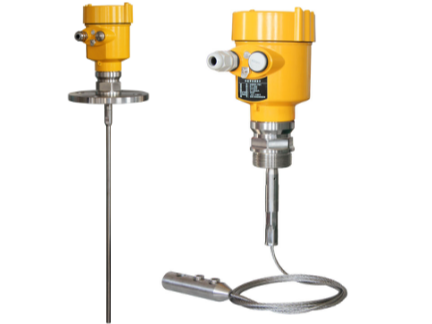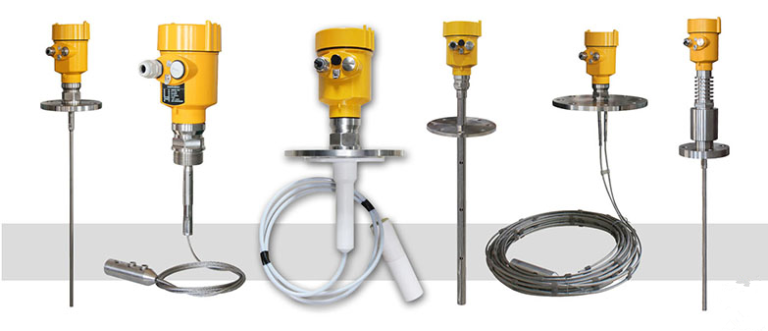I believe that many users in the use of guided wave radar level meter have encountered fluctuations in the reading, many users do not know how to solve a moment, and some users even directly want to replace the instrument, which does save time, but invariably greatly increased the cost. We should analyze the reasons for this situation, and then the correct debugging can be solved, today I will teach you a few tricks.

Guided wave radar is a measuring instrument based on the time travel principle, where the radar waves travel at the speed of light and the travel time can be converted into a level signal by electronic components.
A high-frequency pulse is emitted by the probe and propagated along the cable or rod probe. When the pulse meets the material surface it is reflected back to the receiver inside the instrument and the distance signal is converted into a level signal.
Thanks to an advanced microprocessor and the unique Echo Discovery echo processing technology, the guided wave radar level meter can be used in a variety of complex applications. A wide range of process connections and detection components make the 70X series of guided wave radar level meters suitable for a variety of complex conditions and applications.
For example, high temperatures, high pressures, and small dielectric constants. With the pulse mode of operation, the guided wave radar level meter emits very low power and can be installed in various metal and non-metal containers, which is harmless to the human body and the environment.

Guided wave radar level meter before use must pass the level meter identification standard calibration, but the use for a long time, the readings sometimes fluctuate, causing this failure for several reasons.
Guided-wave radar level, measurement of the measurement blind area is too small. Changes in medium fluctuations can cause changes in the reading of the guided wave radar level measurement, this phenomenon is caused by process deviations and does not belong to the instrument failure. Generally, after the medium fluctuation has stopped, the guided wave radar level measurement readings will return to normal.
The installation position of the steel cable of the guided wave radar level measurement is too close to the inner wall of the equipment, which will easily cause the cable to swing and collide with the inner wall of the equipment. The installation position of the guided wave radar level meter is close to the inlet, and the incoming material washes the steel cable, resulting in fluctuations in the guided wave radar level measurement indication.
The guide wave strength of the guided wave radar level meter is too strong or too weak, resulting in large variations in the reading. The steel wire rope of the guided wave radar level meter is installed loosely or without counterweight, which easily causes the steel wire rope to swing and collide with the inner wall of the equipment, resulting in large fluctuations in the level meter indication.

There are several solutions to the above problems. The blind setting of the guided wave radar level meter must be adjusted according to the needs of the site, and the guide wave strength of the guided wave radar level meter must be adjusted according to the needs of the site.
The steel cable of the guided wave radar level meter should be tightened and fixed or reconfigured when installed. Counterweights should be placed at the bottom of the guided wave radar level meter cable to prevent the cable from shaking during the measurement process.
The installation position of the guided wave radar level meter must avoid the inlet and keep a proper distance from the tank wall. It is believed that by doing these points, the guided wave radar level meter can effectively avoid fluctuating readings.
